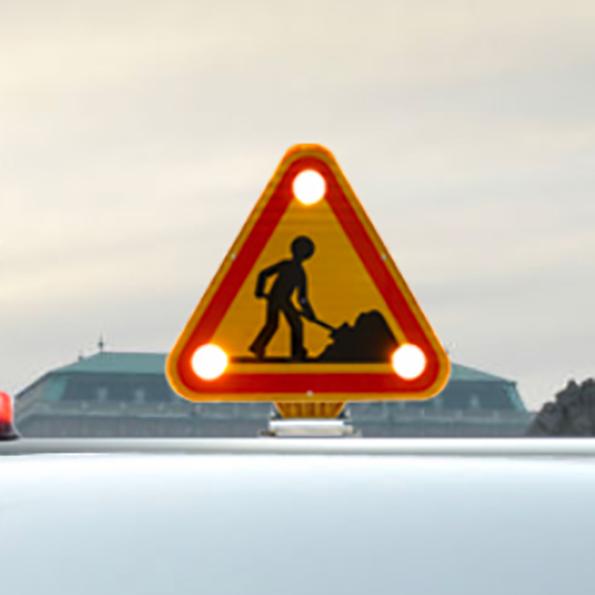What are the regulations for a triflash?
The use of Triflash is regulated and mandatory for many industrial vehicles. Find out what the regulations are regarding its use and which vehicles are concerned in France.

Which vehicles are affected by the Triflash regulation?
Articles 122C and 131 C (order of November 16, 1998) of the road signage require any vehicle of intervention, work or services intervening on the public road a regulatory signage. The use of Triflash allows the vehicles concerned to comply with this ministerial instruction and to circulate legally. Are concerned by the compulsory use of the Triflash:
- Intervention and work vehicles, moving slowly or stopped on a roadway open to traffic (or on the hard shoulder);
- Unmarked light vehicles, not assigned to intervention missions but required to park on the hard shoulder or to enter a work zone.
Some vehicles are exempted by the regulations: for example, sweepers, watering machines and refuse collection vehicles.
Triflash: what does the regulation require?
Articles 122 & 131C of the decree of November 16, 1998 also require vehicles to be equipped with a Triflash consisting of an AK5 panel with 3 synchronized R2 type beacon and warning lights. In addition, the order of November 16, 1998 regulates the size of the Triflash according to the weight of the vehicle.
- Vehicles with a gross vehicle weight of less than 3.5 tons must display a Triflash of at least 500mm.
- Vehicles with a GVW of more than 3.5 tons (including vans) must display a Triflash of at least 700mm.
The Triflash must be visible from the front and rear of the vehicle.
What are the regulations concerning the luminous signaling of professional vehicles?
Article R313-28 of the Highway Code & the decree of 06.12.92 impose several other measures on intervention, work and service vehicles concerning light signals:
- The vehicles concerned must be equipped with special lights in accordance with the orders of July 4, 1972 and January 20, 1987 - rotating lights (flashing lights, discharge lights);
- The vehicles concerned must be orange or light colored.
- The special lights must be orange and reserved for emergency situations, when using the hard shoulder or when entering or leaving a work zone.
- Vehicles located upstream of a work site must also be equipped with additional signage consisting of red and white marking strips approved according to the TPESC standard, class 1 (for roads) or class 2 (for freeways and expressways).
Marker strips must meet strict placement measures:
- One horizontal marking strip must be affixed to each side of the vehicle - hatching directed toward the rear of the vehicle.
- Two horizontal marking strips must be placed on the front of the vehicle - hatching facing the outside of the vehicle.
- Two vertical and two horizontal stripes must be affixed to the rear of the vehicle.
These adhesive marker strips must be reflective. Do you have a question about the use or the regulations concerning Triflash? Our professionals will advise you in the choice of the most adapted equipment for your vehicles and will accompany you in all the stages of your project. Find online all our ranges of new generation Triflash. Expert in the design of on-board lighting solutions, the Vignal group offers you LED models with exceptional characteristics.

